Build Better Products with Real-Time Account Truth.
Fuel your roadmap with unbiased, real-time insights from every account interaction to ensure features truly solve problems and drive value.





"We discovered that one of our product lines was responsible for 84% of our customer confusion and dissatisfaction."
Turn your account interactions into context-rich usage data.
Your account-facing teams collect critical user data, including bugs, feature requests, product confusion, and frustration. The problem is that this data is unstructured, so it remains in their inboxes. Sturdy consolidates, structures, and sends it to the right product leaders. Would the top 5 feature requests from your top 100 accounts be valuable to your team? Sturdy can provide that in just a few seconds.

Search, summarize, and subscribe to interactions
Say goodbye to manual processes like logging data in spreadsheets. Sturdy automates workflows, letting teams focus on account-driven results. With Sturdy, product teams move beyond surveys and interviews to gain a full view of account experiences and needs.

Data-driven roadmaps improve revenue
Sturdy transforms how product teams gather and utilize account insights. Now, you can ensure that product feedback is never missed. Surveys and interviews are undoubtedly helpful, but imagine every email, ticket, and chat with product information at your fingertips. That's Sturdy.

10X your user feedback
It's estimated that only about 10-20% of unstructured product feedback is categorized or logged. With Sturdy, you can increase this to 100%. You can go straight to the source, search, and subscribe to user data directly from your accounts as it arrives in real time. Sturdy can even log issues directly to JIRA; no manual labor is required.

Easy integration with the best apps in just a couple of clicks
Sturdy ensures that nothing goes unnoticed, so the right team members can act in time.
FAQs

Feel free to reach out — our team is here and happy to help.





